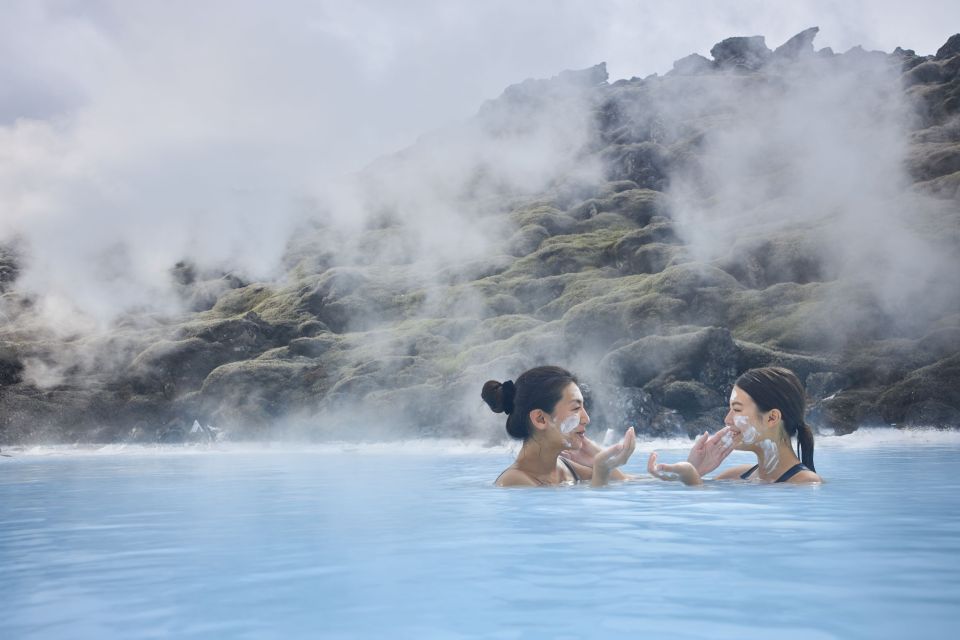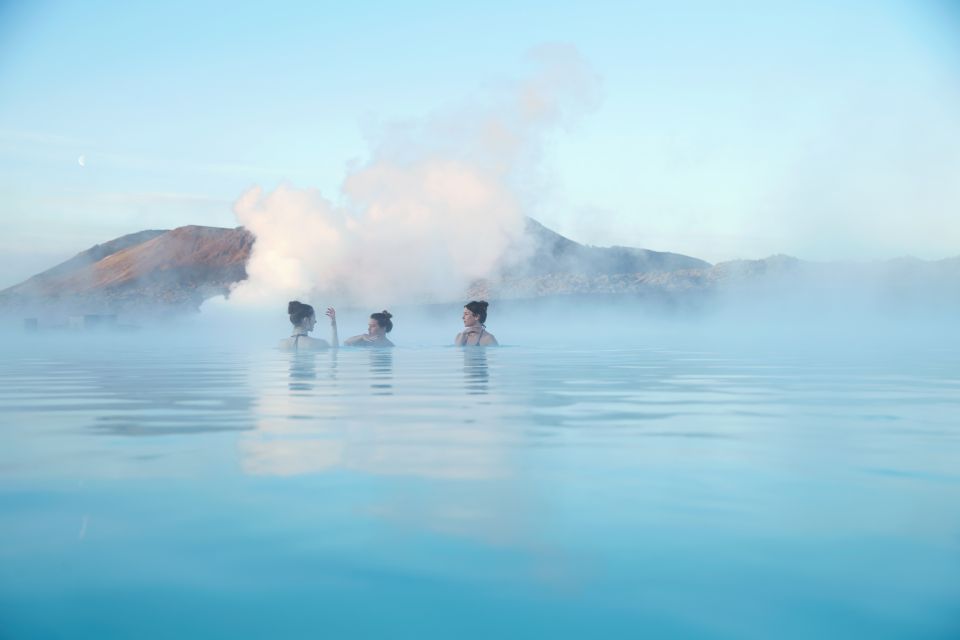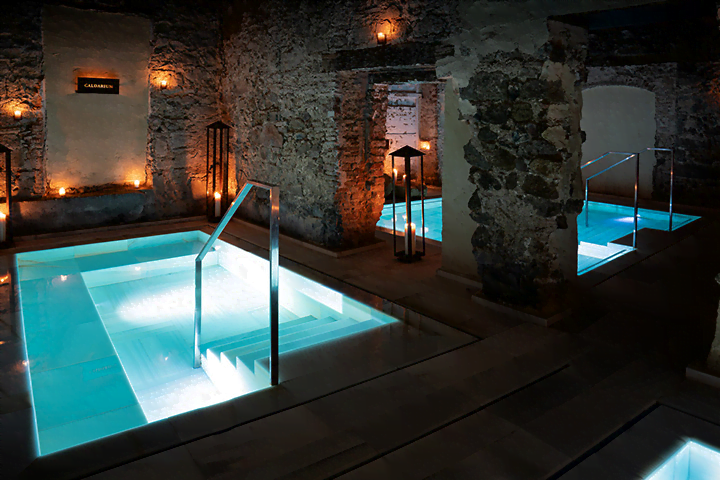Boosting your mind and body: cold water therapy is really hot this year!

Always on the lookout for the latest trends for boosting mind and body, physical and mental health, we looked at cold water therapy. Many celebrities who embraced this therapy claim that it has numerous benefits, ranging from improving athletic performance to boosting the immune system. With your favourite movies (John Wick, Billions and Homeland) filmed at the Aire Ancient Baths in New York City, no wonder the cold water therapy is so hot this year! But is cold water therapy really good for you?
For centuries, water has been recognized for its therapeutic properties, providing both physiological and psychological benefits to those who seek it. Whether to cure illnesses, refresh the body, or relax the mind, water has been one of the most powerful tools in combating a wide range of ailments and injuries since ancient times. In this article, we’ll explore the science behind cold water therapy and its potential benefits and drawbacks.

Table of Contents
What is Cold Water Therapy?
Cold water therapy, also known as cold hydrotherapy, is a practice that involves immersing the body in cold water. This can be done through swimming in cold water, taking cold showers, or using ice baths. The temperature of the water used for cold water therapy typically ranges from 10-15°C (50-59°F).
also known as cryotherapy, is a practice that involves immersing oneself in cold water or subjecting the body to extreme cold temperatures. While it may seem like a challenging activity, there are several health benefits associated with cold water therapy that make it worthwhile. Here are five possible benefits of cold water therapy backed by research and experts:

Cold water therapy is known to help alleviate pain and inflammation in the body. The cold temperature causes the blood vessels to constrict, reducing blood flow to the affected area and numbing the pain receptors. This effect is beneficial for those suffering from chronic pain conditions such as arthritis, fibromyalgia, and back pain.
Cold water therapy can also help aid in exercise recovery. After a strenuous workout, the muscles can become sore and inflamed. Cold water therapy can help reduce inflammation, alleviate muscle soreness, and aid in muscle recovery. It has been shown to increase circulation, which can help deliver oxygen and nutrients to the muscles, promoting healing and recovery.
Cold water therapy has also been shown to have immune-boosting effects. When exposed to cold water, the body responds by producing more white blood cells, which are responsible for fighting off infections and diseases. This can help improve overall immunity and reduce the risk of getting sick.
Cold water therapy has been found to have mood-enhancing effects. When exposed to cold water, the body produces endorphins, which are hormones that help reduce stress and promote feelings of happiness and wellbeing. Cold water therapy has also been shown to increase energy levels, making it an excellent way to start the day or provide a midday boost.
Cold water therapy may also help promote weight loss. When exposed to cold water, the body activates its brown fat cells, which are responsible for burning calories and producing heat. The activation of these cells

History of Cold Water Therapy
Cold water therapy has been used for centuries as a form of therapy and healing. In ancient times, cold water was used to treat various ailments, including inflammation, fevers, and pain. In more recent times, cold water therapy has been used by athletes and fitness enthusiasts to aid in recovery and improve performance.
With a long and fascinating history, dating back thousands of years, it was practised in many ancient cultures, including the Greeks, Romans, and Egyptians, believed in the healing powers of water, and used cold water therapy as a way to boost health and wellness.
The Greek physician Hippocrates, often referred to as the “father of medicine,” was a strong advocate of cold water therapy. He believed that exposure to cold water could help treat a variety of ailments, including fever, inflammation, and headaches. The ancient Romans were also known to take cold baths, often in elaborate bathhouses that were considered social gathering places.
In more recent history, the use of cold water therapy has been associated with the Finnish tradition of “avantouinti,” or winter swimming. This practice involves taking a dip in icy water, often in a natural body of water like a lake or river, and has been popular in Finland for over a century. Advocates of avantouinti claim that the practice can help improve circulation, boost the immune system, and even provide a natural high.
Today, cold water therapy continues to be used in a variety of ways, from professional athletes using ice baths to speed up recovery after intense training sessions, to spa-goers seeking a relaxing and invigorating hydrotherapy experience. And while the scientific evidence to support all of the claimed benefits of cold water therapy is limited, many people believe in boosting their physical and mental wellbeing.
The Science Behind Cold Water Therapy

The practice of cold water therapy has numerous effects on the body, both physiological and psychological. One of the primary physiological effects is the activation of the sympathetic nervous system, which triggers the body’s fight or flight response. This response can increase heart rate and blood pressure, among other things.
The science behind cold water therapy is still a relatively new field of study, but research in recent years has begun to shed light on the mechanisms behind its potential benefits.
One of the most well-known effects of cold water therapy is its ability to reduce inflammation in the body. When the body is exposed to cold water, the blood vessels constrict, which can help reduce swelling and inflammation. This is why ice packs are often used to treat injuries like sprains or strains.
Cold water therapy has also been shown to increase levels of norepinephrine in the body. Norepinephrine is a hormone and neurotransmitter that is associated with feelings of alertness, focus, and energy. This increase in norepinephrine may be part of the reason why some people report feeling a natural high or sense of euphoria after taking a cold shower or bath.
Another potential benefit of cold water therapy is its ability to activate the body’s “brown fat” cells. Unlike white fat cells, which store excess calories and can contribute to weight gain, brown fat cells actually burn calories to generate heat. By exposing the body to cold temperatures, it’s thought that brown fat cells can be activated, which may help boost metabolism and promote weight loss.
While the scientific evidence to support all of these claims is still limited, there’s no denying the popularity of cold water therapy as a tool for promoting physical and mental wellbeing. And with ongoing research, we may soon learn even more about the fascinating effects of cold water on the body and mind.
The Cold Shock Response
When the body is exposed to cold water, it goes through what is known as the cold shock response. This response is a series of physiological reactions that occur when the body is exposed to cold temperatures. The cold shock response can cause rapid breathing, shivering, and an increase in heart rate and blood pressure.

Why is cold water therapy so hot this year?
Known as cryotherapy, is a practice that involves immersing yourself in cold water or subjecting the body to extreme cold temperatures. While it may seem like a challenging activity, there are several health benefits associated with cold water therapy that make it worthwhile. Here are five possible benefits of cold water therapy backed by research and experts:
Cold water therapy has also been linked to improved mental health. Exposure to cold water can trigger the release of endorphins, which are natural painkillers that can help improve mood and reduce anxiety and depression.
Cold water therapy is known to help alleviate pain and inflammation in the body. The cold temperature causes the blood vessels to constrict, reducing blood flow to the affected area and numbing the pain receptors. This effect is beneficial for those suffering from chronic pain conditions such as arthritis, fibromyalgia, and back pain.
Cold water therapy can also help aid in exercise recovery. After a strenuous workout, the muscles can become sore and inflamed. Cold water therapy can help reduce inflammation, alleviate muscle soreness, and aid in muscle recovery. It has been shown to increase circulation, which can help deliver oxygen and nutrients to the muscles, promoting healing and recovery.
Cold water therapy has also been shown to have immune-boosting effects. When exposed to cold water, the body responds by producing more white blood cells, which are responsible for fighting off infections and diseases. This can help improve overall immunity and reduce the risk of getting sick.
Cold water therapy has been found to have mood-enhancing effects. When exposed to cold water, the body produces endorphins, which are hormones that help reduce stress and promote feelings of happiness and wellbeing. Cold water therapy has also been shown to increase energy levels, making it an excellent way to start the day or provide a midday boost. When exposed to cold water, the body activates its brown fat cells, which are responsible for burning calories and producing heat. The activation of these cells can help increase metabolism and promote weight loss.
One of the primary benefits of cold water therapy is improved athletic performance. Many athletes and fitness enthusiasts use cold water therapy to aid in recovery after intense workouts. Cold water therapy can help reduce inflammation and soreness in muscles, which can lead to faster recovery times and better overall performance.
Immune system boost
Cold water therapy has also been shown to boost the immune system. Exposure to cold water can increase the production of white blood cells, which are responsible for fighting off infections and diseases. This increase in white blood cells can help boost the immune system and protect against illness.

Drawbacks of Cold Water Therapy
Risk of Hypothermia
One of the primary drawbacks of cold water therapy is the risk of hypothermia. Hypothermia occurs when the body’s core temperature drops below 35°C (95°F). Prolonged exposure to cold water can increase the risk of hypothermia, especially in people who are not used to cold water immersion.
Increased Stress on the Heart
Exposure to cold water can also increase stress on the heart. The sudden drop in temperature can cause blood vessels to constrict, which can increase blood pressure and put additional stress on the heart.
Risk of Injury
Cold water therapy can also increase the risk of injury. The sudden shock of cold water can cause muscles to contract, which can lead to strains and sprains. Additionally, slippery surfaces around bodies of water can increase the risk of falls and other injuries.
Cold water therapy has numerous potential benefits, from improved athletic performance to boosted immune system function. However, it also comes with potential risks, including hypothermia, increased stress
It may seem like a daunting activity, but it has several health benefits that make it worthwhile. It can help alleviate pain and inflammation, aid in exercise recovery, boost the immune system, improve mood and energy levels, and promote weight loss. If you are interested in trying cold water therapy, it is essential to start slowly and gradually increase exposure to avoid injury or shock to the body. Consult with your doctor before starting any new health regimen, especially if you have underlying health conditions.

Soothe your soul at one of these cold water sanctuaries
Cold water therapy may seem like a daunting choice for boosting your mood and immune system, but it has several health benefits that make it worthwhile. It can help alleviate pain and inflammation, aid in exercise recovery, boost the immune system, improve mood and energy levels, and release weight. If you are interested in trying cold water therapy, it is essential to start slowly and gradually increase exposure to avoid injury or shock to the body. Consult with your healthcare provider before starting any new health regimen, especially if you have underlying health conditions.
Whether you’re in need of a quick city spa fix or an indulgent weekend away, there are plenty of great relaxation spots around the world to choose from. Here are a few suggestions for some of the best spas to visit for a dose of cold water therapy and other relaxing treatments:
The Blue Lagoon in Iceland
This geothermal spa is famous for its warm, mineral-rich waters, which are said to have healing properties for the skin. But the Blue Lagoon also offers a cold water plunge pool for those who want to experience the invigorating benefits of cold water therapy.

Aire Ancient Baths in New York City
This luxurious spa in downtown Manhattan offers a range of hydrotherapy treatments, including a cold plunge pool and a “salt water” pool with high concentrations of Epsom salt for added buoyancy. Great locations for the most celebrated movies and celebrities, the cold water therapy here is really…hot!
The Ayana Resort and Spa in Bali
This luxurious spa offers a range of hydrotherapy treatments, including a cold plunge pool and a Kneipp therapy walk, which involves walking through alternating hot and cold water pools to stimulate circulation and invigorate the body.
The Blue Palace Resort and Spa in Crete
This seaside resort offers a range of wellness treatments, including a cold plunge pool and a thalassotherapy pool, which uses seawater and marine algae to detoxify and revitalize the body.
Whether you’re looking to improve your physical health or simply relax and unwind, these spas offer a range of treatments and experiences to suit your needs. So why not treat yourself to some much-needed self-care and book a visit to one of these great relaxation spots?






